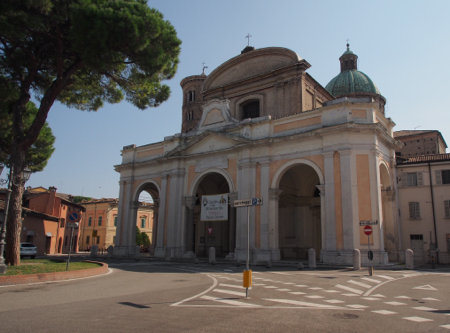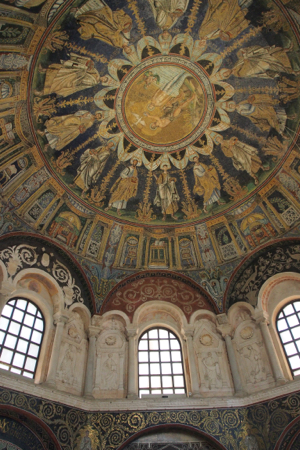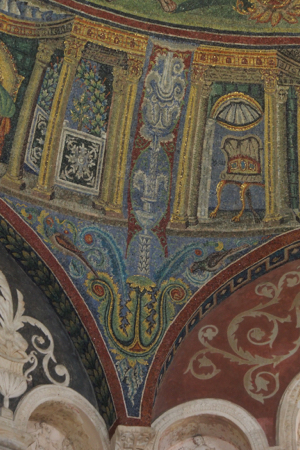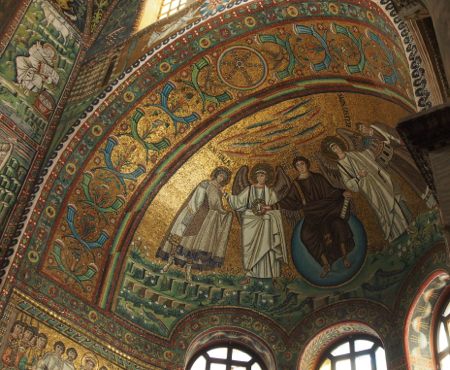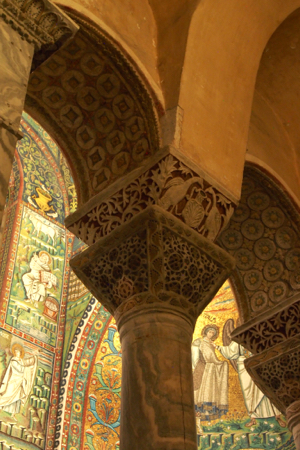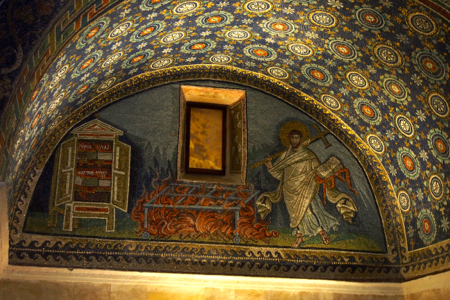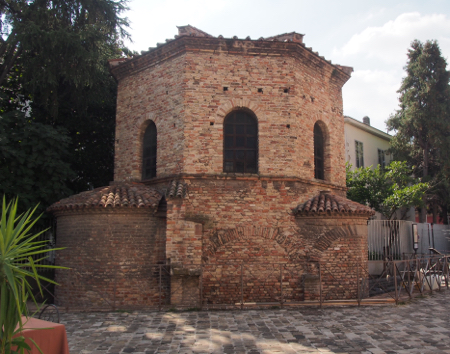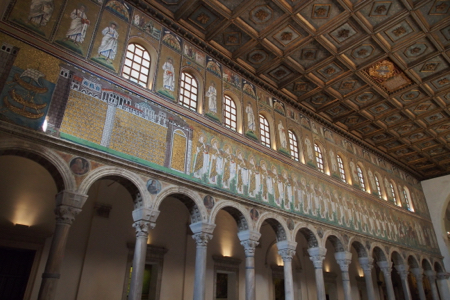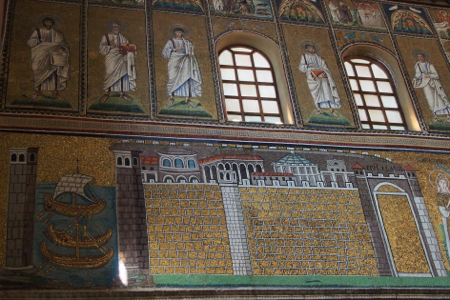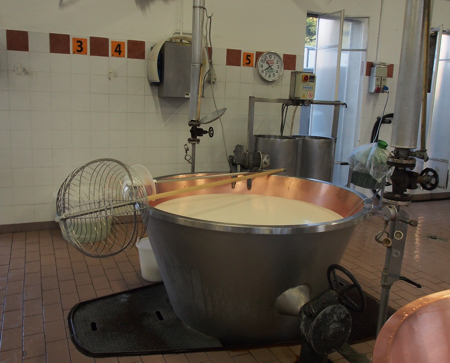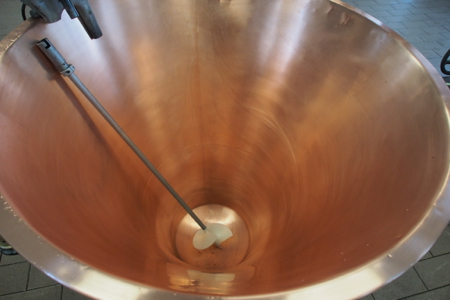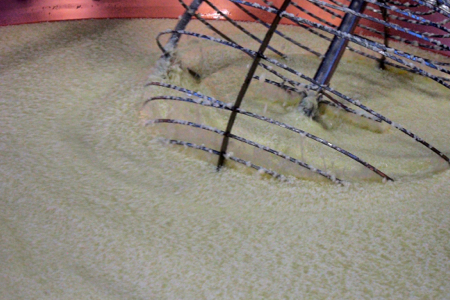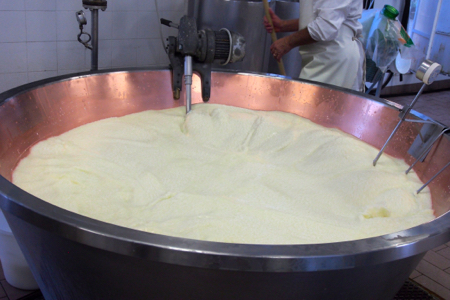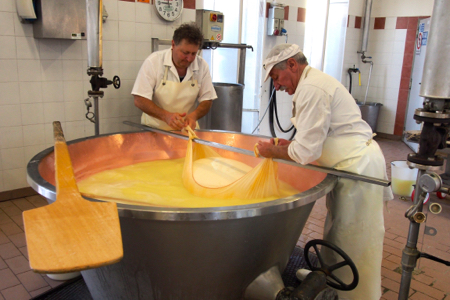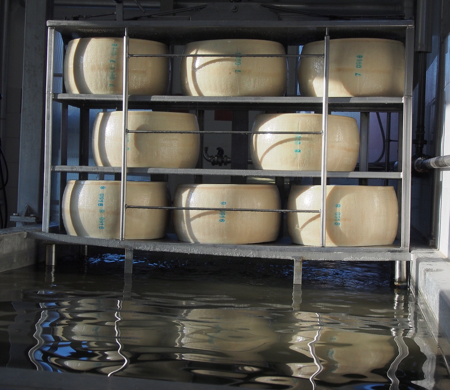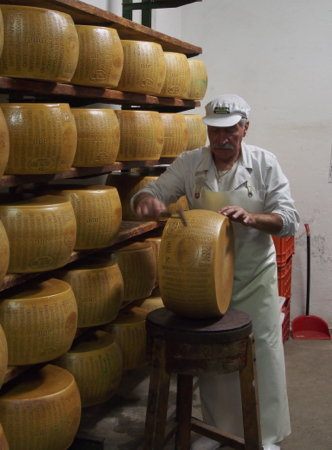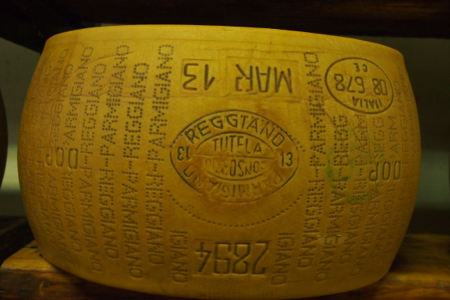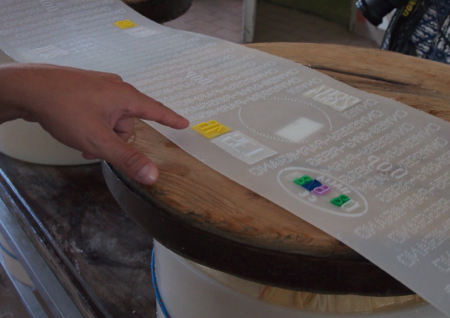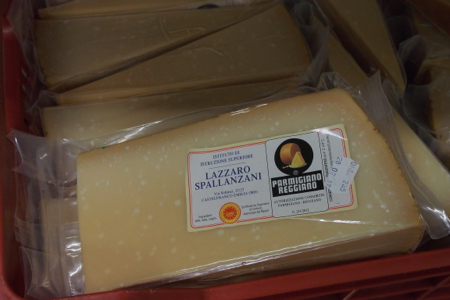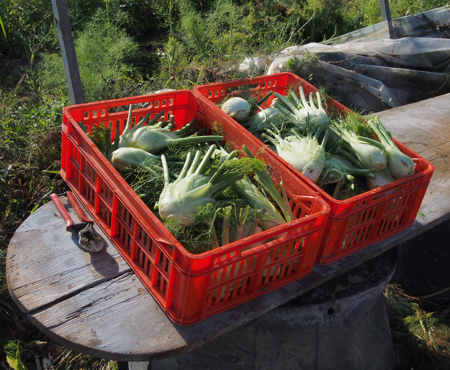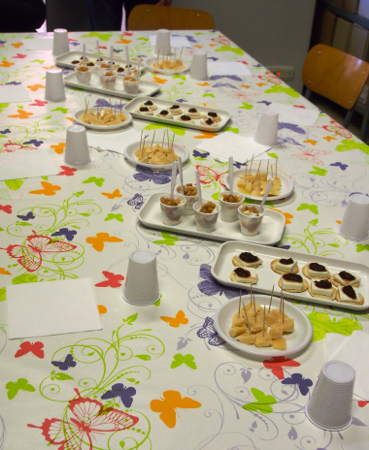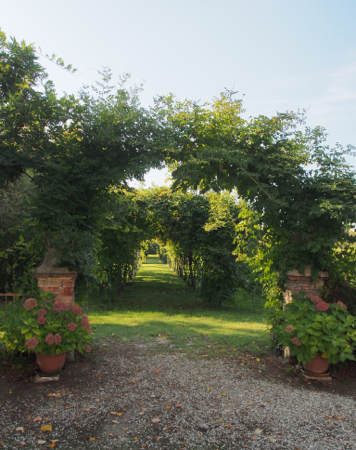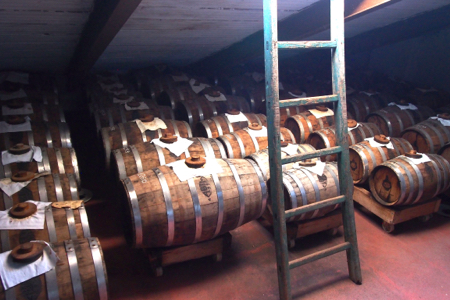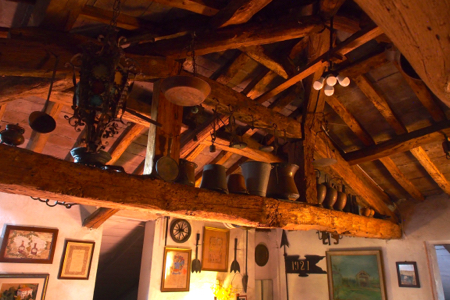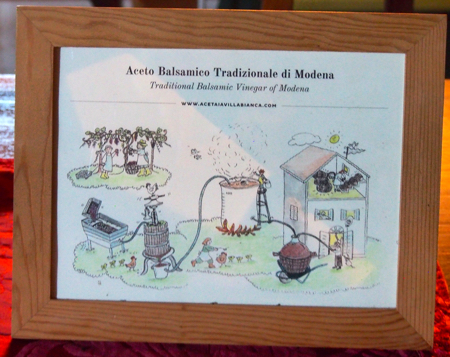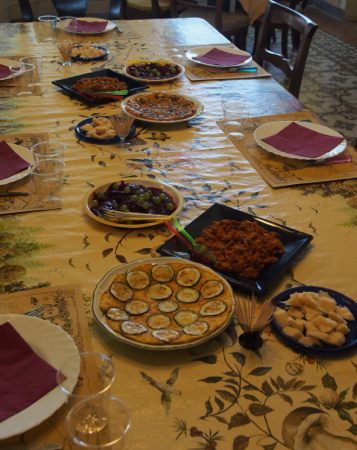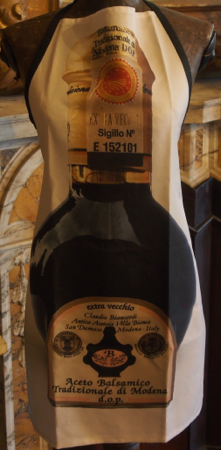Mon, 9/26/16 – Bologna and Ravenna
Since only three of us wanted to take the optional tour to Ravenna, it was cancelled. So Beth, Marge, and I went on our own. We all had a taxi ride (5 Euros each) to the train station and got tickets on the 8:52 train to Ravenna. We arrived at 9:50 and walked into the old town, which is mostly pedestrian ways but with a lot of bicycles. We followed signboards to find the six churches, etc. with outstanding mosaics, which is what Ravenna is especially known for.
Our first stop was a charming find, the Museo Capella Arcivescovile (see video at this link). Sr. Farsetti collected relics and ruins from churches and ancient buildings in Ravenna before they were torn down. One section of this museum contained Farsetti’s Lapidario – old stones with Latin inscriptions. St. Andrew’s Chapel was reconstructed in two rooms with mosaics and frescoes on the walls and ceiling. There was an intricately carved bishop’s throne and an Easter Calendar, created after the Nicene Conference, to calculate the dates of Easter from 532 AD to 626. There was a solid silver cross with a relic of two thorns from Christ’s crown of thorns in the center. (No photos inside.)
Next we went into the Metropolitan Cathedral, which was not on our ticket of tourist sites, but next to it was the Baptistry built in the 5th c. above a previous Roman bath. The mosaics on the dome were of the Baptism of Jesus and the apostles below that.
Ravenna train station
Metropolitan Cathedral of the Resurrection of Our Lord Jesus Christ - the Duomo
Interior of the Baptistry of Neon
Interior of the Baptistry of Neon
The Basilica of San Vitale was beautiful. There are marble designs on the floor, marble columns with reverse images on adjacent panels (macchia aperta), an all mosaic apse and ceiling, and many of the mosaic chips are gold. There are designs and figures everywhere. And then the Mausoleum of Galla Placidia (built at the end of the 5th c. and also known as the Mausoleum of Costanzo III) is even more beautiful.
Basilica of San Vitale
Mosaics in the interior of the Basilica of San Vitale
Macchia aperta marble in Mosaics in the interior of the Basilica of San Vitale
Mosaics in the interior of the Basilica of San Vitale
Mosaics in the interior of the Basilica of San Vitale
Mosaics in the interior of the Basilica of San Vitale
Mausoleum of Galla Placidia
Mosaics in the Mausoleum of Galla Placidia
Mosaics in the Mausoleum of Galla Placidia
Mosaics in the Mausoleum of Galla Placidia
It was time for lunch so we stopped at a pizza and sodas shop and it was good to sit down for a while.
We walked to the Arian Baptistry but it was closed for renovation. Lastly we visited the Basilica di Saint Apollinare Nuovo with more Byzantine mosaics. It was uniquely different from the other mosaics.
Battistero Degli Ariani
Basilica di Saint Apollinare Nuovo and Tower
Interior of the Basilica di Saint Apollinare Nuovo
Interior of the Basilica di Saint Apollinare Nuovo
Interior of the Basilica di Saint Apollinare Nuovo
We walked to the train station, missed the 2:30 train and waited for the 3:30 back to Bologna Centrale. Back in Bologna, we walked down Independence St. all the way from the train station to our hotel. It was a beautiful 75°, blue sky day and we saved about $100 each by doing the trip to Ravenna on our own.
For dinner we went with Tommaso to a restaurant next door to our hotel for a nice spaghetti and lasagna dinner at a moderately expensive cost. Italians seem to drink coffee for lunch and then eat a long dinner after 7 PM. They start with an appetizer, then a first course of pasta, then a second course of meat, and then something sweet for dessert. All this takes at least two hours and a bottle or two of wine.
Tues., 9/27/16 – Bologna to Parma
Breakfast at 6:30 and on the mini-bus at 7 AM. We had three stops on our way to Parma. At 7:50 we stopped to learn how Parmigiano Reggiano and ricotta cheeses are made. To be traditional Parmigiano it must be made in the region of Italy between the Po River and the Apennine Mountains. The cows must be from here, eat here, be milked here, and the milk must be made into cheese wheels here and aged here. The cows may not eat any silage, fermented food, by-products, or food with animal origin. We watched the whole process from the milk in the copper boiling pot to whey starter and natural calf rennet added to the curds, to forming it into wheels, then soaking in salt, and stored for aging. Half of the remaining whey is made into ricotta cheese and the rest goes to feed hogs and pigs. We watched a master cheese maker at the Agriculture Institute (a high school) make the cheese, then took a walk in the Institute’s garden where I tasted fresh fennel for the first time and then some real garden tomatoes just like the ones I used to grow. We also got to sample several cheeses – Parmesan, ricotta that was just made, and caciotta cheese that is made from pasteurized sheep’s milk.
| Return to Top | Return to Itinerary | Return to Trips page to view other trips | Return to Dreamcatcher Home Page |



